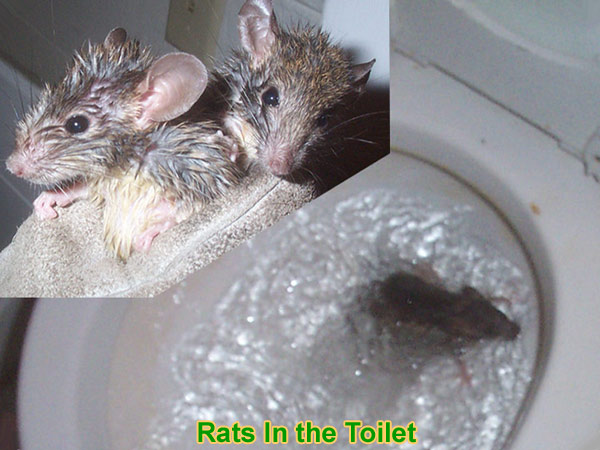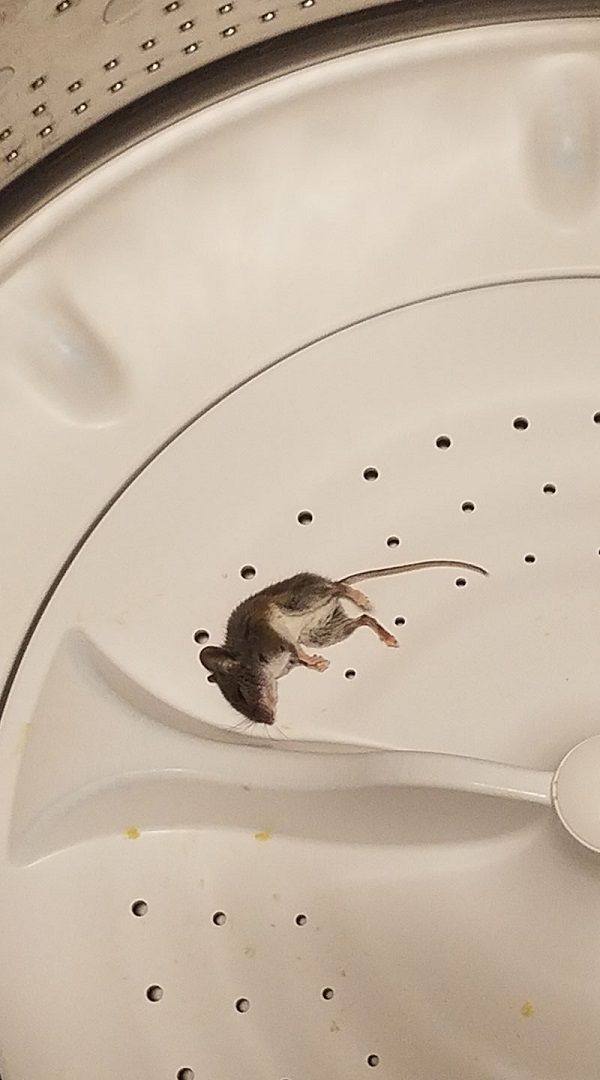Mice don't generally enter a house through the plumbing, but it's possible. Truth be told, if a rodent enters your house via the plumbing system or sewer system or toilet, it's probably a rat,
more likely a Norway Rat, maybe a Roof Rat.

Mice are physically capable, it is therefore definite that they can enter a building through plumbing but there is a technique that can shield them from getting into your building; comprehensive rodent proofing. Apart from preventing mice from accessing buildings through plumbing, attention must be redirected towards reducing their means of survival; water, food and shelters that they are accustomed to.
In order to identify how mice enter buildings through plumbing, it is of utter importance to understand their capability levels. For instance house mice can:
- Travel for longer distances about one and a half miles
- They are capable of hanging upside down and cover some distance on either mesh wires or gauge wires
- Enter openings that are very small; ¼ inch in diameter
- Jump vertically up to 18 inches
- Jump against a surface that is vertical in order to reach higher levels
- Drop down when they are 8 feet high and scurry away without any injuries.
It is therefore significant to ensure that the correct guards are used to shield mice from entering the building via plumbing among other routes. Though it is unfortunate that guards that were utilized to prevent mice from getting into buildings through toilet plumbing, there are other options that are available like consulting the relevant authorities on sanitation and getting the best solutions.
You can also prevent mice from getting into the building through plumbing by using mechanical guards made of sheet, metal or similar materials. The main purpose of these shields is to prevent them from climbing into the plumbers and also travelling through them with the intention of accessing a building.
Mice can also get into the building using plumbing stack; in this situation you have to consider hiring a professional who will fix the plumbing stack. Apart from shielding and fixing plumbing systems that allow mice to get into building, it is important to ensure that household garbage is stored properly and later on disposed off well. The sources of food are automatically limited when you practice good sanitation; moreover it acts as a shield that prevents these animals from accessing your building through plumbing.
Mice are very stubborn animals, moreover they do not give up that easily, therefore you have to frequently check the shields installed and ensure that they are intact all the time. Attaching sheet metal bands also helps because it usually prevents mice from travelling across the plumbing systems into the buildings. Did you know that you can avoid using extra expenses to prevent mice from getting into your building through plumbing? All you have to do is to ensure that you thoroughly inspect your home before moving in and ensuring that everything is intact.
The presence of mice in a home for most home dwellers or managers is an issue of great concern. Whether you like mice or not,
they will work until they find the perfect opening to make YOUR home THEIR home. You could call them the uninvited guests who
do not pay rent, pay for food supplies and other basic home utilities, and you would be right. It's a fight to the finish for
the mice, which are primarily driven by survival. However, the home or office manager's concern is for a neat and peaceful
environment. How mice successfully find their way into homes has also been a subject for discussion. One question is: Do
mice actually enter a building through the plumbing?

Mice are determined, smart, resourceful animals with a strong sense of smell and perception. They can spot from afar where an opportunity
for survival is, and generally it's lurking in the homes, offices, or warehouses of individuals as well as large corporations. The answer
to the question is both a "no" and a "yes". No, because most mice do not literarily make use of plumbing with regards to the pipes leading
to the toilet seat due to the presence of water. Nor do they typically come up through the sink or shower because there would likely be an
opening with a filter on the side of the home or office building. According to research (with the exception of the Norway rats or black rat),
mice cannot enter through a toilet’s plumbing because of water in the plumbing. The Norway rat, also referred to as the brown rat or sewer rat,
can swim through the plumbing to enter homes and offices.
The crevices and gaps between the plumbing pipes and the wall or supports create an opening for mice to access a building. In most cases, care is
taken to ensure that there is no available space between the pipe and the walls for the mice, but as time goes by, due to wear and tear there could
be a shift, thereby creating a passage for mice, cockroaches, and other creeping animals to enter the building. Again, when the plumbing system has
been left unused for quite some time it therefore becomes more habitable or receptive to mice since there is no activity going on inside of it.
Generally, but with particular reference to the black or brown mice, mice are very good at using pipes, cables, and walls of buildings to climb into
people's homes and offices. They look out for cracks or openings even as small as ½ an inch and then wiggle their way through to get in. Any opening
around the window, drain pipes, doors, rooftops, air conditioning, heating systems, air vents and weak foundations are access routes for rodents. This
has made it of utmost importance for there to be constant maintenance of the building facility. The best measure would be to enlist the services of
professionals in order to eliminate access routes for mice as it takes just a single crevice or crack to make a building compromised or rodent infested,
which in most cases the residents might be looking at the easily noticeable places but leave out other key areas. Some other measures could be removing
likely hiding places outside the home or office and ensuring food supplies are neatly kept and covered while waste from food is properly disposed of or
sealed.
Go back to the
How To Get Rid of Mice in the Attic home page.
Or you can read more mouse control information, on these topics:
How to kill mice
Does mouse repellent work?
Get mice out of the wall
Mouse poison analysis
Do mice live in urban or wild areas?
Do mice make good pets?
Do mice come through the plumbing?
Are glueboards good to catch mice?
Can you catch a mouse in a cage?
What can mice climb?